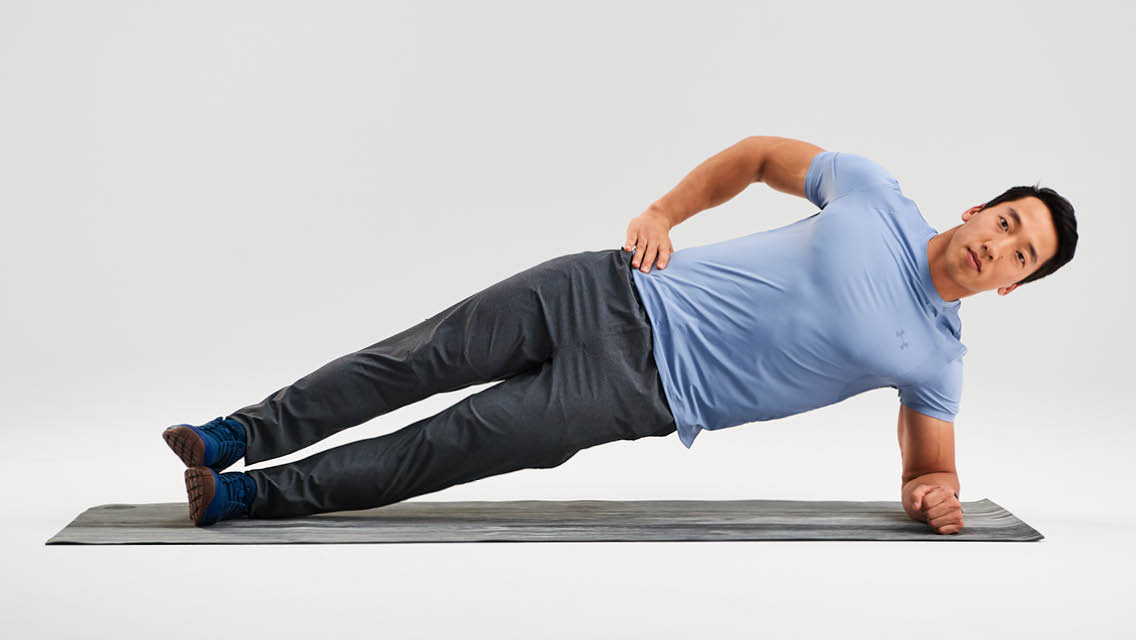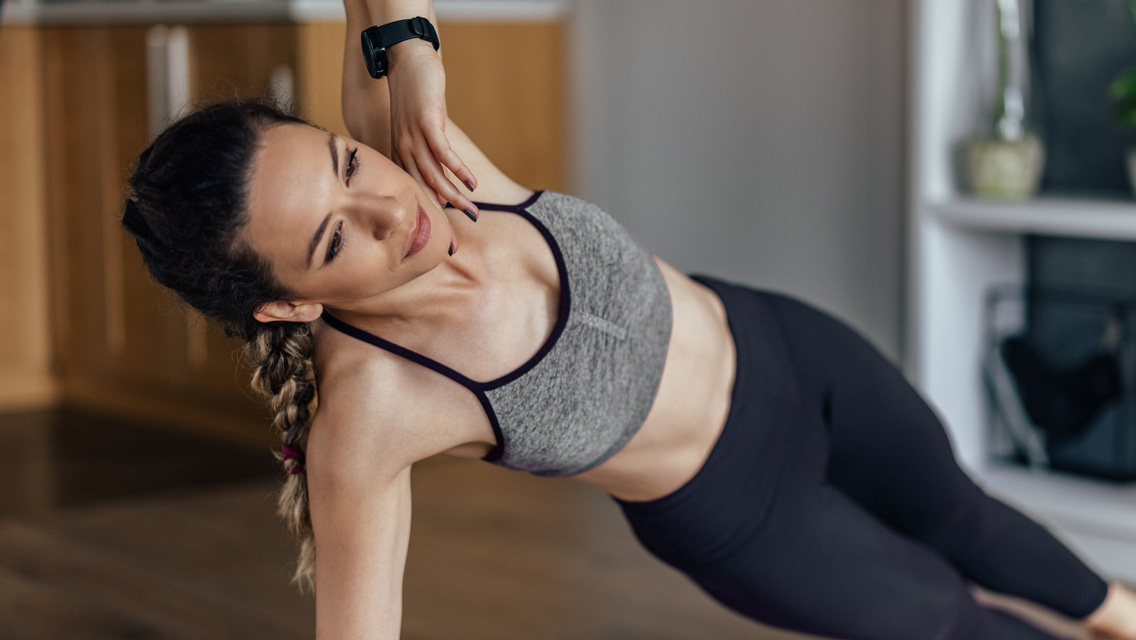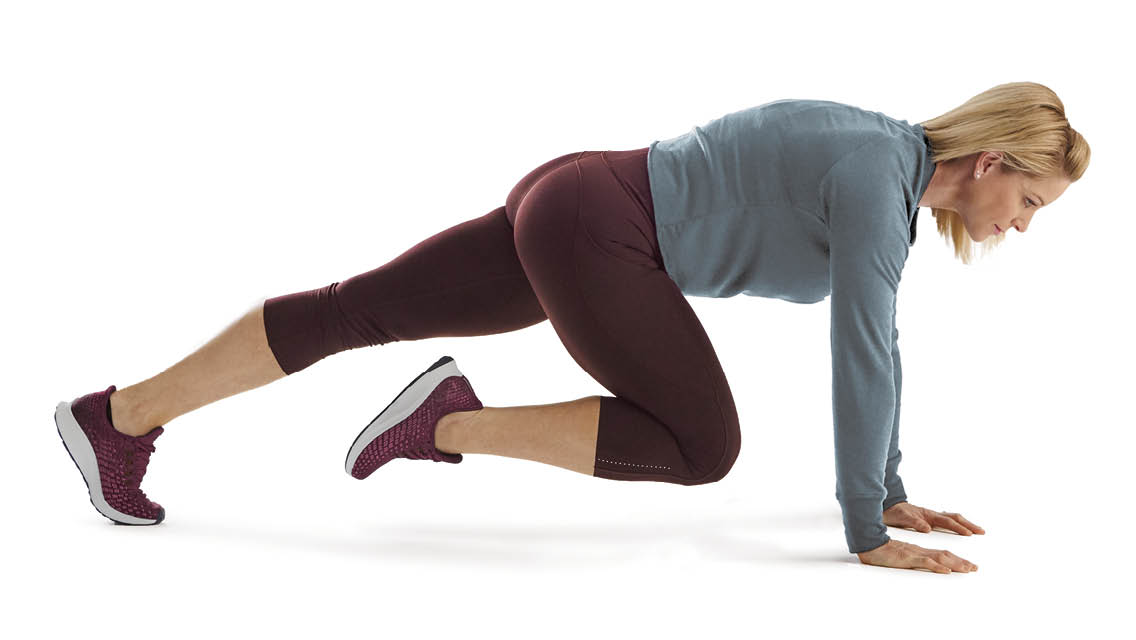Common Plank Form Mistakes
Dropping the hips.
“One of the biggest setup mistakes I see is people dropping their hips toward the ground,” Gentilcore says. Not only does this strain the lower back, but it also makes it harder for your abs to fire.
Shoulder blades collapsed.
Letting your shoulder blades draw together is a sign that your upper body isn’t engaged in holding you up off the floor. When your upper body doesn’t pull its weight, your ribs and hips are more likely to drop, making the exercise less effective.

Leaning forward or back.
Your weight should be evenly distributed between your upper and lower body. If you let your body drift forward so your weight is in your forearms, your shoulders will likely round forward and become irritated. If you lean your body back so your weight is in your toes, your lower back will take the brunt of the load.

How to Set Up for the Plank
Engage your lower body.
Gentilcore suggests ramping up full-body tension by flexing your glutes and thighs. Recruiting these lower-body muscles helps engage your abs, keeping your hips from dropping toward the floor.

Push yourself away from the floor.
Press your forearms into the ground as though you’re pushing yourself away from the floor. “That’s going to keep the shoulder blades from touching each other,” Gentilcore says.
Apply pressure through all four contacts.
To prevent your body from leaning too far forward or back, he suggests aiming to distribute your weight equally between four touchpoints: your right forearm, left forearm, right toes, and left toes.
(After you master the plank, pump it up with these variations!)

Strong Starts
Are you setting up correctly while lifting? Get expert guidance on perfecting your setup for several common strength moves at “9 Strength Moves You May Be Setting Up Wrong (and How to Fix Them),” from which this article was excerpted









This Post Has 0 Comments